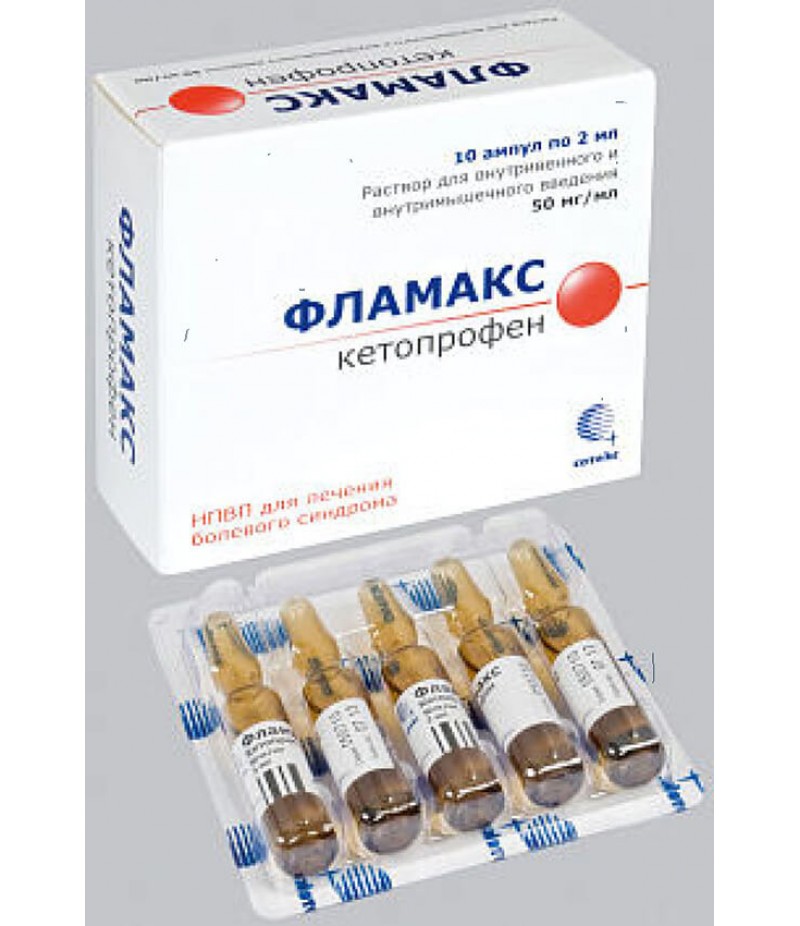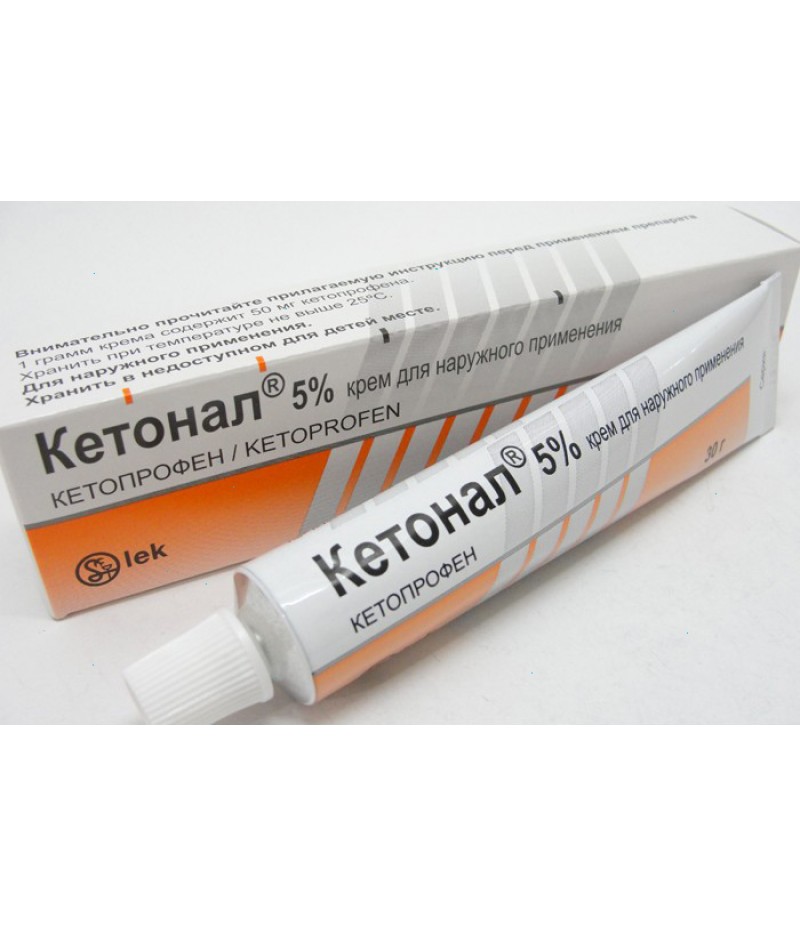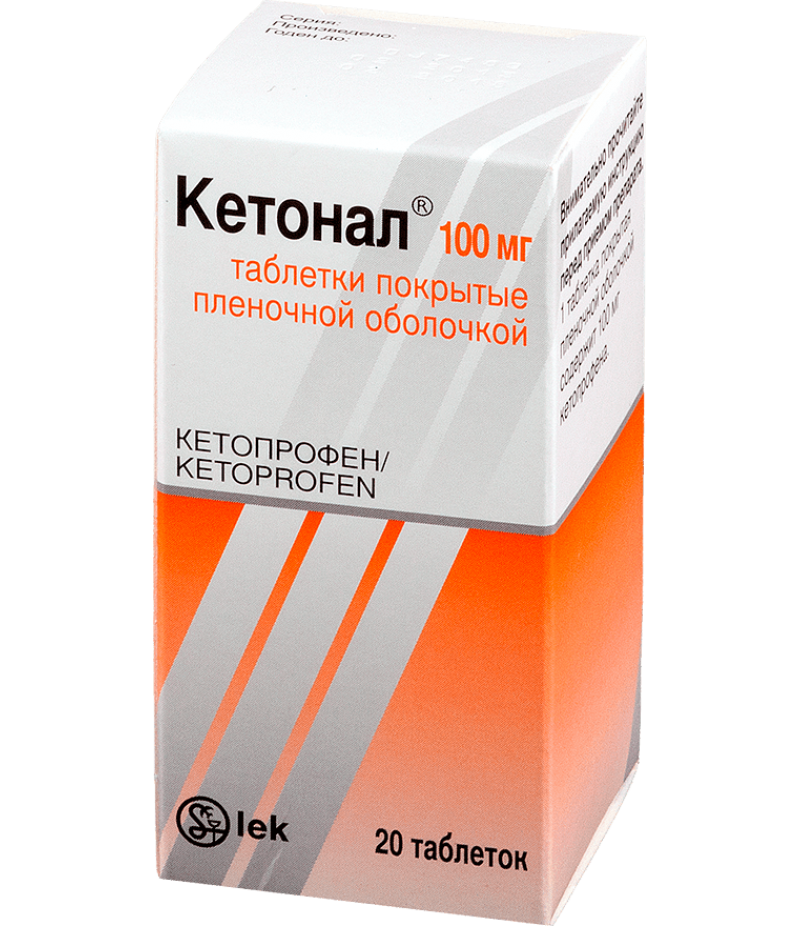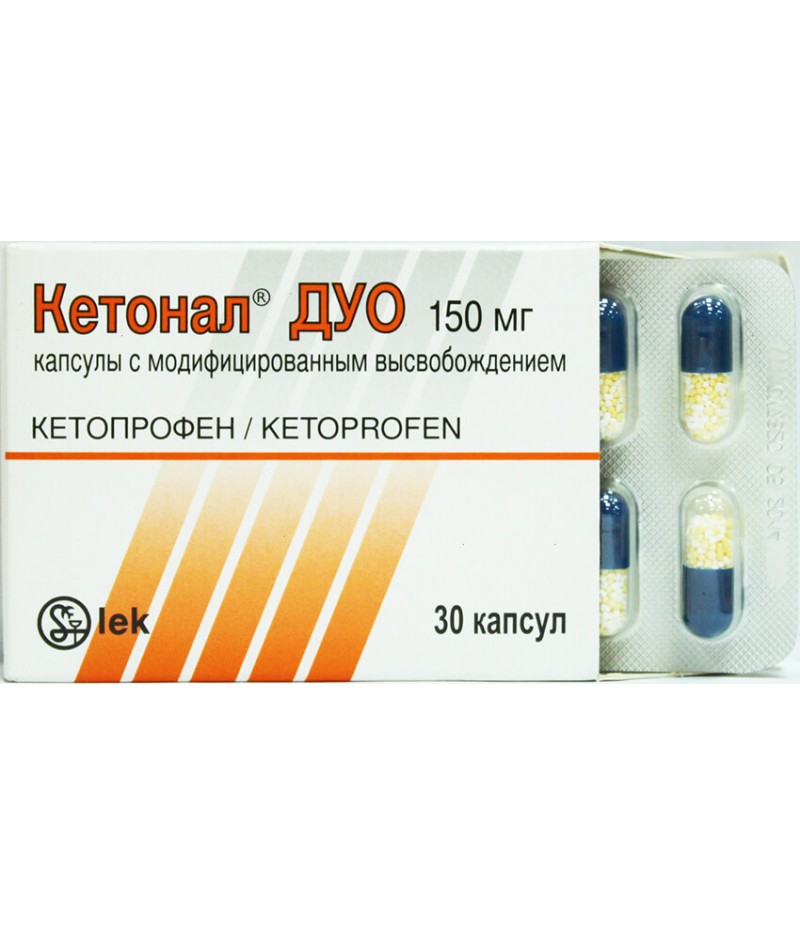Flamax solution 50mg/ml 2ml #10
- $13.85
- 3 or more $13.50
- Availability:In Stock
Flamax instructionYou can buy Flamax hereCompositionFlamax capsules (1 capsule) contains the active ingredient ketoprofen (50 mg), as well as additional substances: MCC, lactose monohydrate, sodium lauryl sulfate, croscarmellose s..
Tags: solution
Flamax instruction
You can buy Flamax here
Composition
Flamax capsules (1 capsule) contains the active ingredient ketoprofen (50 mg), as well as additional substances: MCC, lactose monohydrate, sodium lauryl sulfate, croscarmellose sodium, silicon dioxide colloid, povidone.
Flamax Forte in tablets contains 100 mg of active ingredient ketoprofen (1 tablet), as well as additional ingredients: rice starch, lactose monohydrate, croscarmellose sodium, silicon dioxide colloid, MCC, povidone, sodium lauryl sulfate, macrogol 6000, magnesium stearate, hypromellose, talc, titanium dioxide.
Flamax as a solution in a single ampoule (2 ml) contains 100 mg of ketoprofen. Also in the composition are additional substances propylene glycol, benzyl alcohol, ethanol, sodium hydroxide, water for injection.
Form of issue
Flamax is available in the form of capsules, a solution for intravenous and intramuscular injection, rectal suppositories, lyophilizate for the subsequent preparation of solution, tablets, capsules.
Flamax capsules have a white body and a blue cap, inside it contains a white powder that has a uniform consistency.
The solution is contained in ampoules of 2 ml each having a colored fracture ring or a notch. The cell contour pack contains 5 ampoules.
Flamax Forte is available in the form of biconvex round tablets of blue color, which are covered with a film membrane. The blister contains 10 tablets, 2 blisters are placed in a cardboard bundle.
Capsules Flamax forte are contained in a plastic container, which is placed in a pack of cardboard.
pharmachologic effect
The drug has anti-aggregation, analgesic, anti-inflammatory, antipyretic effects on the body. The analgesic effect is caused both by the central and peripheral mechanisms.
Pharmacodynamics and pharmacokinetics
Ketoprofen binds to blood proteins in the body by 99%, mainly with albumin. The highest concentration of the substance in the plasma is achieved relatively quickly. Ketoprofen quickly enters the connective tissue and synovial fluid. Immediately after intramuscular injection, a high concentration of the active substance in the synovial fluid is observed 15 minutes after the injection. It lasts up to 30 hours, so you can reduce the pain and stiffness in the joints for an extended period of time. Through the BBB in significant quantities does not penetrate.
Metabolism of ketoprofen occurs mainly in the liver. There is a process of glucuronidation, after which esters and glucuronic acid are formed. Then they are excreted by the kidneys. The half-life of ketoprofen is 1.6 to 1.9 hours.
Indications for use
The drug Flamax and Flamax Forte is used for the purpose of symptomatic therapy of pain and inflammatory processes of different origin at their moderate intensity:
diseases of the musculoskeletal system of a person (arthritis, rheumatic soft tissue damage, ankylosing spondylitis, osteoarthrosis);
sciatica, neuralgia, lumbago;
migraine, pain after surgery;
painful menstruation, inflammation in the pelvic organs;
pain and inflammation after trauma;
toothache;
pain in oncological diseases.
Contraindications
Flamax is not used in the following cases:
high sensitivity;
period of exacerbation of ulcers and erosions of the gastrointestinal tract;
exacerbation of inflammatory bowel diseases;
bleeding from the digestive tract;
acute period of kidney disease, severe form of liver failure.
hyperkalemia;
progressive kidney disease;
combination of recurrent nasal polyposis or bronchial asthma with intolerance to NSAIDs, in particular acetylsalicylic acid;
violations of hemostasis, hematopoiesis;
after aortocoronary shunting;
third trimester of pregnancy and breastfeeding;
the patient's age is up to 15 years.
Caution medicine is used for arterial hypertension, bronchial asthma, edema, chronic heart failure, sepsis, diabetes, kidney failure, coronary heart disease, severe somatic diseases.
Side effects
There may be such side effects:
Digestive system: dyspepsia, abdominal pain, change in taste, liver function disorders, stomatitis, taste change. With prolonged treatment with large doses of drugs, bleeding of the digestive tract, gums, and the appearance of ulcers on the gastrointestinal mucosa is possible.
Nervous system: insomnia, headache, nervousness, dizziness, migraine, manifestations of drowsiness or increased excitability, memory impairment.
Organs of the senses: visual impairment, ringing in the ears, pain and dry eyes, worsening of hearing, congestion hyperemia.
Cardiovascular system: tachycardia, increased blood pressure.
Organs of hematopoiesis: anemia, agranulocytosis, leukopenia, thrombocytopenia.
Urinary system: cystitis, urethritis, kidney disorders, nephritis, hematuria.
Allergic manifestations: rash, itching of the skin, swelling, rhinitis, bronchospasm, dermatitis.
Other manifestations: hemoptysis, severe sweating, muscle twitching, shortness of breath, myalgia, nosebleeds. When treating large doses of the drug, vaginal bleeding is possible.
Instructions for the use of Flamax (Method and dosage)
If the patient begins treatment with Flamax, the instructions for use should be carefully studied.
The injections (solution) are administered intravenously and intramuscularly. Intravenous administration is carried out exclusively in the hospital. On average, the infusion lasts 0.5-1 hours, a maximum of 48 hours. The dose of the drug should not be above 300 mg. With a short infusion of 100-200 mg of the agent diluted in 100 ml of 0.9% sodium chloride solution, the introduction lasts no more than 1 hour. The next time the drug can be administered after a lapse of 8 hours. With prolonged infusion, 100-200 mg of the agent is diluted in 500 ml of the infusion solution, the administration lasts 8 hours. Next time you can enter the drug after 8 hours.
Intramuscularly, Flamax is administered 100 mg 1-2 times a day.
Flamax Capsules should be taken orally while eating. Dosage is prescribed by the doctor depending on the course of the disease. The maximum daily dose is 300 mg.
Instruction for use Flamax Forte provides that the tablets should be taken orally during the meal. As a rule, 1 tablet is prescribed 2-3 times a day. The permissible daily dose is 300 mg.
Overdose
An overdose of the remedy is not dangerous. In this case, dizziness, headache, vomiting, abdominal pain, shortness of breath, bleeding and other side effects may occur.
You need symptomatic treatment, in particular, gastric lavage, sorbent intake. There is no specific antidote.
Interaction
When treating any other drugs with Flamax should always consult a doctor before starting therapy.
If both Flamax and loop diuretics are prescribed, the nephrotoxic effect of these drugs is enhanced. Flamax reduces the effectiveness of uricosuric medicines, but enhances the effects of anticoagulants, ethanol, fibrinolytic agents, antiaggregants, and the manifestation of side effects when taking SCS and mineralocorticosteroids, estrogens.
Flamax reduces the effectiveness of the effect of antihypertensive drugs and diuretics.
With simultaneous use with GCS, other NSAIDs, corticotropin, ethanol, there may be bleeding GI, ulcers, impaired renal function.
The risk of bleeding increases with simultaneous administration with heparin, anticoagulants, thrombolytic agents, antiaggregants, cefoperazone, cefamandol, cefotetan.
When treating Flamax, you should recalculate the doses of insulin and other hypoglycemic drugs, as their hypoglycemic effect increases.
Simultaneous treatment with sodium valproate administration leads to a decrease in platelet aggregation.
Increases the concentration of nifedipine, verapamil, lithium preparations, methotrexate in blood plasma.
Increases the hematotoxicity of myelotoxic agents.
Absorption of the drug is reduced with the simultaneous administration of colestyramine and antacids.
When mixed in a single Tramadol vial and Flamax, a precipitate forms.
Terms of sale
To buy Flamax you don't need a prescription.
Storage conditions
Store Flamax in a dark and dry place, the temperature should not exceed 25 ° C. The product should be protected from children.
Shelf life - 3 years.
special instructions
If both Flamax and Warfarin treatment or lithium drugs are used concomitantly, strict monitoring by the attending physician is necessary.
Flamax can mask signs of infectious diseases.
In the process of therapy, it is important to monitor the parameters of peripheral blood, as well as the activity of the liver and kidneys. If their functions are violated, the dose should be lowered and the patient carefully monitored.
To reduce the likelihood of side effects from the gastrointestinal tract, you need to apply a minimal dose of the drug and do not practice long-term treatment.
If 17-ketosteroids are to be determined, Flamax is canceled 48 hours before the study.
It is important to take into account that attention concentration can be worsened with the treatment, so you should carefully drive the vehicle and perform other potentially dangerous jobs.
Children
It is not used to treat children under 15 years of age.
In pregnancy and lactation
Do not apply Flamax to treat women in the third trimester of pregnancy, as well as during lactation. If necessary, treatment is possible in the first and second trimesters, but only if the expected benefit exceeds the risk level for the fetus.
Reviews of Flamax
In general, reviews about Flamax and reviews about Flamax Fort are positive. Their pronounced analgesic effect is noted. Often these drugs are used in the postoperative period. Patients say that injections and Flamax pills can significantly alleviate the condition after surgery.
Also, the drug is widely used by patients to relieve pain caused by diseases of the musculoskeletal system. The occurrence of negative side effects in the reviews is rarely mentioned.






